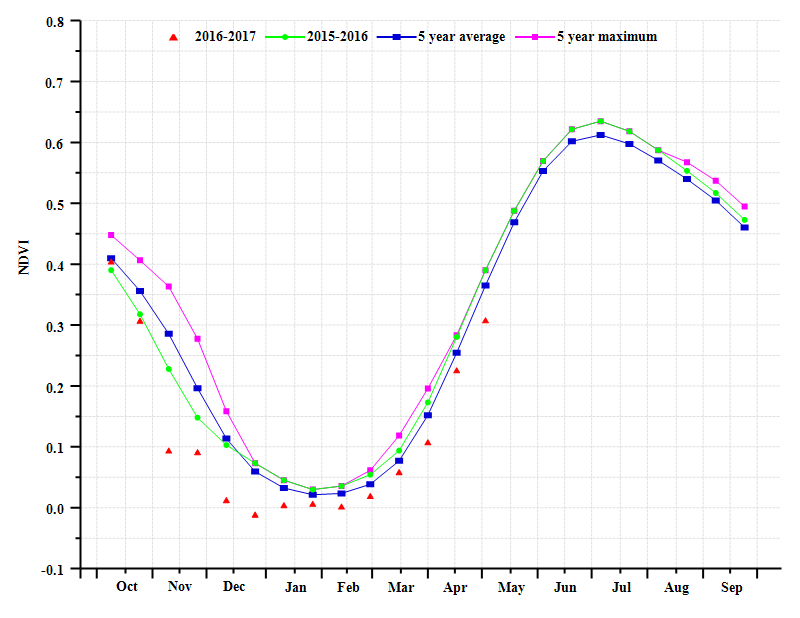
Bulletin
wall bulletinMenu
Authors: 超级管理员 | Edit: yannn
On average, Russia experienced unfavorable crop condition fromJanuary to April (VCIx=0.58), which coincides with the wintering stage ofwinter wheat and early planting of spring wheat. The fraction of cropped arableland (CALF) was not monitored because of the serious snow cover during themonitoring period. Overall Russia experienced suitable climate conditions inthese four months, with sufficient rainfall and warm temperatures (RAIN, +6%,and TEMP, +1.2°C). Due to the joint effect of rainfall and temperature, theBIOMSS indicator rose 5% above the five-year average.
As the crop condition development graph based on NDVI illustrates,NDVI was significantly lower than usual from the middle of October last year onforward, a situation due to the abundant snow cover on most croplands inRussia. With spring wheat being sowed, NDVI reverted to close to average. NDVIin Kaliningrad, Volga, and Northwestern Federal District (mainly concentratedin Kirovskaya Oblast, Gorodovikovsk, Samarskaya Oblast, Udmurtiya Republic,Ulyanovskaya Oblast and Volgogradskaya Oblast) consistently exceeded theaverage of the last five years, especially in February, resulting mostly fromthe abundant rainfall in these places (RAIN, +40%, +18%, and +29%,respectively). In most parts of croplands in the southern Urals (includingPenzenskaya Oblast and Bashkortostan and Udmurtiya Republics), NDVI was closeto average until the middle of February, after which it decreased.
Based mostly on the low VCIx values for the country (0.58), theoutlook for Russia's wheat production is considered mixed.
Figure3.27. Russia crop condition, January-April201


(a) Crop condition development graph based on NDVI (b) Maximum VCI

(c) Spatial NDVI patterns compared to 5YA and the coresponding (d) NDVI departure profiles
